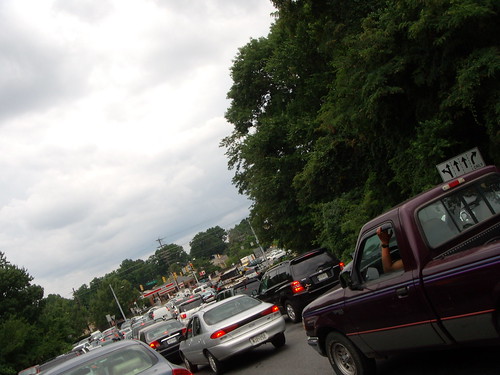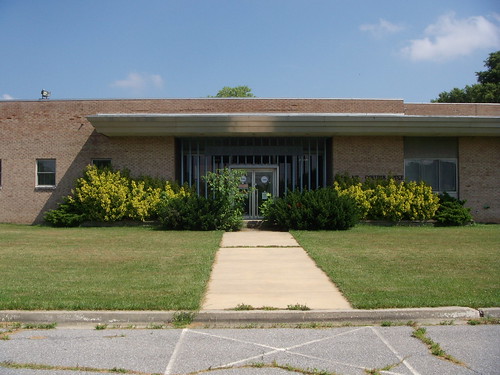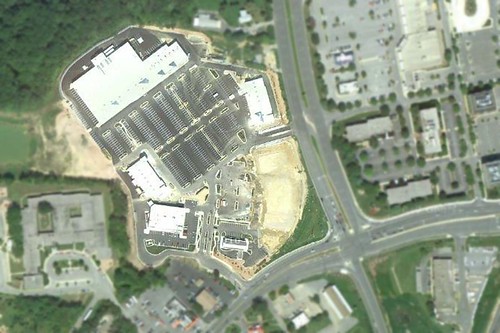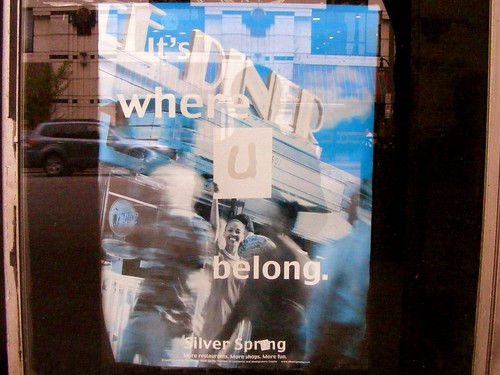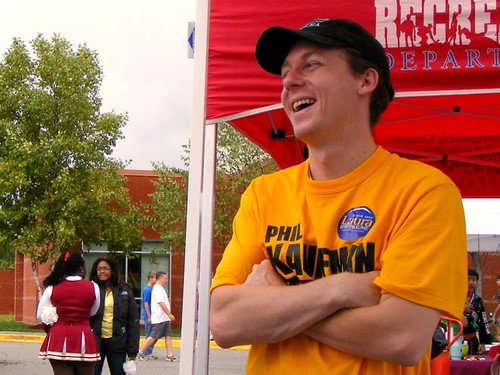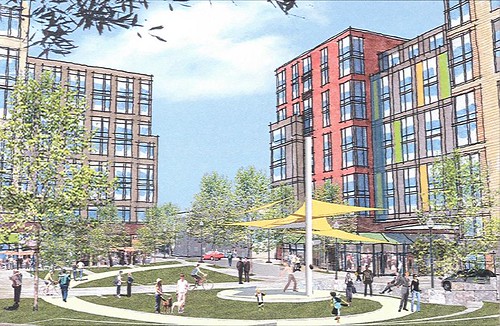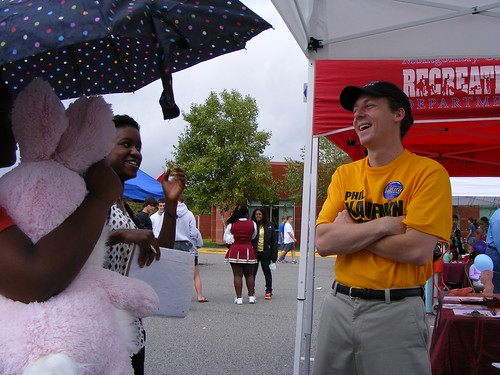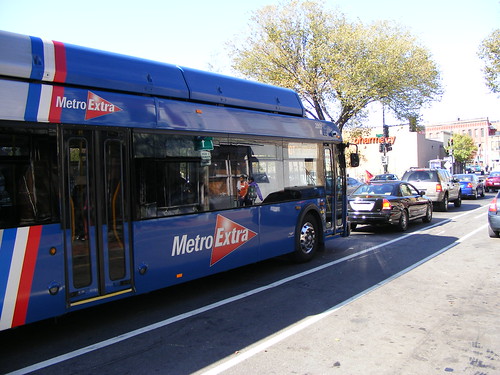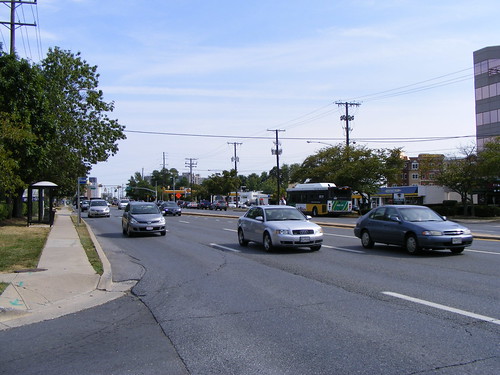Today's guest post comes from Dave Murphy, who writes the blog Imagine, DC. He grew up in Franklin Knolls (off University Boulevard) and offers us this story about coming of age in East County.

Fifteen years ago, I was a nonconformist in high school. Like my older brother before me, I sported wild hair and listened to the latest parent-unfriendly rock music. And I loved visiting Phantasmagoria, a (literally) underground record store on Grandview Avenue in Wheaton.
It was an easy walk from my high school, a since-demolished private Catholic school that has, in its relocation, implied that they want to keep lower middle class students like me from ever attending there again. But in 1995, that school was a quarter mile from the Wheaton Metro station where I caught the C2 or C4 home, and occasionally I would stop in at Phantasmagoria or one of the other quirky little off-the-beaten-path shops in Wheaton along the way.
In 1996, Phantasmagoria moved to Elkin Street, next to one of my other favorite Wheaton venues, Legends Pool Hall. "Phantaz", as we called it, added a grill and a stage at their new venue, and all of the sudden Elkin Street boasted two hip venues. The tight streets and nighttime activity created a sort of feral urbanism, an area to walk around and feel natural despite the fact that I was trying to distract myself from the continuing decay of community and the arts in suburbia.

Both Phantaz and Legends were places shady enough to be considered cool, but safe enough that my mother would reluctantly approve of me spending Friday nights shooting billiards and going to punk shows. Both were independent businesses, and both were affordable enough for crews of lower-middle class outcasts to seek refuge. In Legends, you were most likely to see Central American or Southeast Asian immigrants on the billiards tables or service industry types at the bar; meanwhile, Phantasmagoria attracted every kind of punk, indie rocker, metalhead, ska fan, or geek rocker you can imagine.
I never got into any trouble there, save for coming home smelling like cigarettes (which I don't smoke now, and certainly wasn't then). Nonetheless, I felt welcome and at home in the shadows and back alleys of Wheaton, not in Wheaton Plaza or fast food joints where my more clean-cut classmates might be found bubbling around after school.
Olney was well represented at my high school. In fact, the shiny new campus is up there, far away from the public transportation that allowed me to attend the Wheaton campus. I was forced to spend a great deal of time in Olney, especially during my junior year when I dated a girl who lived up off Emory Lane.
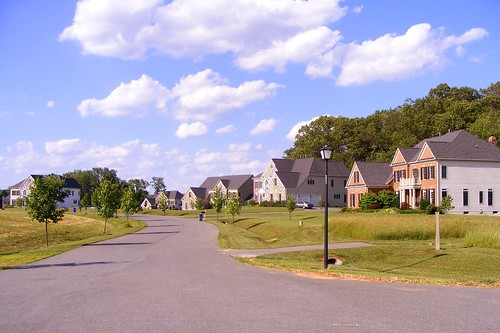
The entire town disgusted me. I couldn't quite put my finger on why. I often cited the lack of mature trees and the spread out nature, but my friends would accuse me of being jealous of the affluence. There was no walking around. A seventeen-year-old with a ponytail caught milling around in that neighborhood must have looked like a fly on a wedding cake. The vast cul-de-sac mazes of huge colonials with vinyl siding were built to isolate and exclude, and there were no gritty little holes in the wall or back alleys for kids like me to feel at home.
That’s when I coined the phrase "generistocracy" to describe Olney and many other Montgomery County sprawlburbs. It described the people who lived in those crisp, new, bland neighborhoods that where completely devoid of any stimulation and hadn’t been around long enough to develop any character. Generistocracy helped me separate places like Olney from places like downtown Bethesda, home of one of my favorite underground shops, a second hand boutique called Rerun that specialized in hippie attire and rock memorabilia.
Bethesda was wealthy like Olney, but Olney rubbed me the wrong way. I felt welcome in Bethesda. Olney made it clear that I had no business there. Downtown Bethesda wanted me to come in and walk around. Bethesda didn’t have much to offer a kid like me the way Wheaton did, but it gave me a sense of place that I never got from the generistocracy.
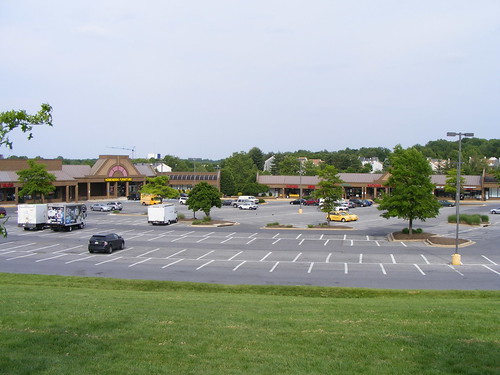
Meanwhile, I'd continue to discover Wheaton outside the mall. There was Barry's Magic Shop and an antique toy store that specialized in trains. There was House of Cards, a baseball card store, and Nick’s Diner, which only served breakfast and lunch. There was a military surplus store where I bought most of the patches that were sewn on my jacket. And there were not one, but two music stores where I would stare enviously at guitars and drum sets.
It didn't sink in that these were independent businesses, the kind that didn't care if a kid with a ponytail would come in and poke around despite being unable to make a purchase more often than not. Shopkeepers in the mall always eyeballed me as if I were going to steal something. But the best part about them, the part that wouldn't hit me until much later, was how accessible they were. I didn't need a car, money, or an agenda. I could just be there and fit in. Had Wheaton gone all Starbucks and Panera back then, I don't know how I would have made it through high school.
My girlfriend's father, a prominent local banker, forbade us to go to Legends, insisting we instead played pool at the billiard room in their house. Wheaton was just too dangerous for him. It was bad enough his daughter was dating a kid who in middle school hung out with his Salvadorian, Ivorian, and Cambodian friends in the garden apartments of Langley Park.
But for my part, I didn't drink, I didn't do drugs, and I didn't even smoke. I wasn't in a gang, I didn't get into fights, and I wasn't vandalizing. I didn't go to edgy venues looking for mischief. I just liked the fact that there was a place for me to be, and in Wheaton I felt like I fit in pretty well.
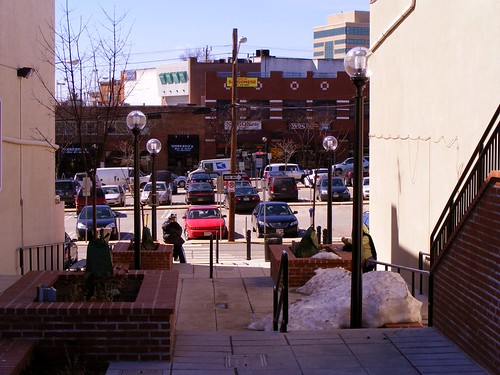
I liked walking around. I liked being recognized and treated like a member of a community. I liked that the businesses welcomed me. I liked recommending these places to my friends who might actually buy something. And it made going to the bus station after school an interesting adventure, not a walk of shame for that poor kid whose parents hadn’t bought him a car yet.
I’m thirty now, and I don't go to Wheaton very often anymore. More often I find myself in downtown Silver Spring or Bethesda. As much as Wheaton shaped who I am and how much I appreciate a sense of place, it just reminds me of high school too much, and I wasn’t very fond of my high school. Phantasmagoria closed its doors for good in 2001. Legends is still there, though it's been nine years since I last set foot inside. Many of the other small, independent shops have either gone dark or moved.
But Wheaton still has a bit of that feral urbanism, set of raw streets with not-so-mainstream shops and businesses that feel a little off the beaten path despite the fact that they’re right in the middle of everything, versus the tame, boring set of chains in strip malls that litter much of the suburbs. As wave after wave of investment pours into the choice real estate around Wheaton Metro, I can only hope that the edgy underground Wheaton I grew up with can survive and thrive.


